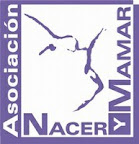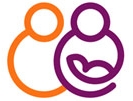Outcomes of Planned Hospital Birth Attended by Midwives Compared with Physicians in British Columbia
ARTICULO ORIGINAL: Comparan los resultados perinatales de mujeres que han recibidos cuidados de una matrona en su parto, con aquellos que han recibido cuidados medicos en el hospital. Los resultados no dejan ninguna duda: Las mujeres atendidas por matronas tuvieron menor incidencia de cesareas, uso de narcoticos, monitorización electronica fetal, amniotomía y episiotomía. No hubo diferencias en los resultados perinatales adversos a excepción de un menor uso de fármacos en la resucitación neonatal por parte de las matronas. Mostramos aqui el RESUMEN
Para ver el texto completo es necesario suscripción. ENLACE
Patricia A. Janssen PhD, Elizabeth M. Ryan RM, BScN, Duncan J. Etches MD, CCFP, FCFP, Michael C. Klein MD, CCFP, FCFP, FCPS, Birgit Reime DScMPH (2007) Outcomes of Planned Hospital Birth Attended by Midwives Compared with Physicians in British Columbia Birth. 34 (2), 140–147.
ABSTRACT: Background: The impact of midwifery versus physician care on perinatal outcomes in a population of women planning birth in hospital has not yet been explored. We compared maternal and newborn outcomes between women planning hospital birth attended by a midwife versus a physician in British Columbia, Canada. Methods: All women planning a hospital birth attended by a midwife during the 2-year study period who were of sufficiently low-risk status to meet eligibility requirements for home birth as defined by the British Columbia College of Midwives were included in the study group (n = 488). The comparison group included women meeting the same eligibility requirements but planning a physician-attended birth in hospitals where midwives also practiced (n = 572). Outcomes were ascertained from the British Columbia Reproductive Care Program Perinatal Registry to which all hospitals in the province submit data. Results: Adjusted odds ratios for women planning hospital birth attended by a midwife versus a physician were significantly reduced for exposure to cesarean section (OR 0.58, 95% CI 0.39–0.86), narcotic analgesia (OR 0.26, 95% CI 0.18–0.37), electronic fetal monitoring (OR 0.22, 95% CI 0.16–0.30), amniotomy (OR 0.74, 95% CI 0.56–0.98), and episiotomy (OR 0.62, 95% CI 0.42–0.93). The odds of adverse neonatal outcomes were not different between groups, with the exception of reduced use of drugs for resuscitation at birth (OR 0.19, 95% CI 0.04–0.83) in the midwifery group. Conclusions: A shift toward greater proportions of midwife-attended births in hospitals could result in reduced rates of obstetric interventions, with similar rates of neonatal morbidity. (BIRTH 34:2 June 2007)







 Anterior: USO DE LA PELOTA SUIZA EN EL TRABAJO DE PARTO
Anterior: USO DE LA PELOTA SUIZA EN EL TRABAJO DE PARTO

 Web MatronasUbeda by
Web MatronasUbeda by 